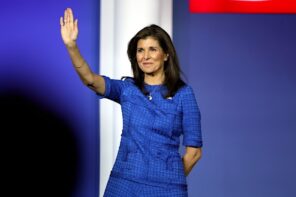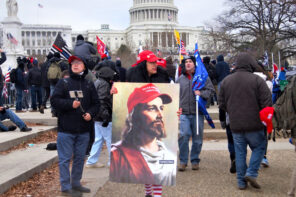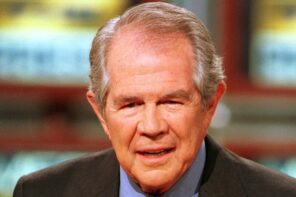This weekend, Oct. 23-25th, marks the end of the 2020 CrossFit Games season, with ten finalists traveling to Aromas, California to test their fitness in a multi-day competition. This has undoubtedly been the strangest season for CrossFit athletes competing in the sport of fitness. Not only did the global pandemic shut down many gyms and cancel in-person competitions, but scandals surrounding CrossFit’s founder and questions about CrossFit’s lack of racial equity and inclusion also rocked the CrossFit world earlier this year.
In June of this year, I watched the CrossFit community implode. For nearly twenty years fanatics of the rogue fitness brand ardently followed the teachings of CrossFit’s founder and CEO, Greg Glassman, growing the CrossFit community to nearly 15,000 gyms worldwide. Then, in an early June tweet, Glassman trivialized the pandemic and mocked the death of George Floyd, setting off a cascade of events that spelled the end for him and threatened the fitness empire he created. Key sponsorships were lost. Hundreds of gyms disaffiliated.
Many CrossFitters were incensed by Glassman’s insensitivity and demanded his resignation. Seemingly overnight Glassman became a heretic within a community of his own design. CrossFit has since changed ownership but it continues to deal with the fallout from Glassman’s tweet, with its first major test under new leadership taking place during this weekend’s aforementioned competition for the title of “Fittest on Earth.”
Over the past decade, the CrossFit brand has emerged as something of a darling among cultural commentators and scholars of religion alike. Its zealous members, brand evangelists, and tight-knit community serve as a convenient example for how communal identity, mutual aid, and belief in a specialized lifestyle can exist and thrive outside of traditionally religious contexts.
For the past three years I have conducted an ethnography of CrossFit. Building off groundbreaking work by R. Marie Griffith and Lynne Gerber, I’ve found a significant terrain of religious expression and organization in the world of franchise fitness. CrossFit has the full slate of keywords for the study of religion, including charisma, conversion, and (most importantly for our present moment) schism.
As a scholar of religion, it’s tempting to cast the incident of Glassman’s tweet as an origin story. It would be appealing to claim that the wave of member disaffiliations and the outpouring of statements about racial diversity and inclusion within the world of CrossFit began in this moment. It wouldn’t be entirely wrong, but, as with many schisms, the moment of cataclysm is only possible because of pre-existing fissures in the community.
The history of religion (and particularly American religion, with its sectarian impulse) teaches us that conditions for schism develop after the unifying enthusiasm of the founding-era subsides and debates over community consensus around moral action, doctrine, or communal boundaries arise. Glassman’s tweet will no doubt be etched in CrossFit’s history and written about in future case studies, but, importantly, CrossFit’s problems with race did not start there.
Since 2007 CrossFit has hosted the annual CrossFit Games to test its methodology—a combination of gymnastics, Olympic lifting, odd-object tasks, and cardiovascular endurance—with the objective of crowning “The Fittest on Earth.” A latent Social Darwinism simmers barely beneath the surface of the atmosphere, as individuals utter slogans (“Stronger. Faster. Harder to Kill.”) and fight for titles (“Fittest Athletes,” “Fittest Fans,” “Fittest on Man,” “Fittest Woman”) that suggest we can create a stronger body through the right disciplined practices. Scanning the roster of top competitors and podium finishers, one observes an overwhelmingly white majority, with very little racial diversity.
On numerous occasions I’ve been present when CrossFit executives have been asked about increasing diversity within the wider world of CrossFit. Occasionally the question is met with silence and seeming indifference. But more often than not executives, affiliate owners, and gym members give the same response: CrossFit memberships are expensive (often $100-$200/month) and therefore exclude low-income populations that are disproportionately represented by people of color.
This answer gestures towards the inequities wrought by centuries of discrimination and exclusion at a systemic level without pausing to consider what role CrossFit Inc., affiliate owners, and members themselves have played in reinforcing and perpetuating the system.
Years ago Elisabeth Akinwale, one of the few Black women to compete at the CrossFit Games, rebuked this notion in an Instagram video. Cost isn’t the issue for America’s Black middle class, Akinwale argued, “We have money to spend.” Rather, the issue is that CrossFit’s greatest value is its ability to create community through fitness and when confronted with a primarily white community that may be, at best well-intentioned and at worst offensive, the question for the Black fitness consumer becomes: “Why would I spend $200 a month to feel like an outsider?”What the testimony of Akinwale and others makes unequivocally apparent is that the CrossFit brand isn’t just coincidentally a product consumed largely by white people; it’s a product designed by and for white people. As Willie James Jennings has observed about Christianity, whiteness is never a surprise; it is the specified result of structural thought.
Many CrossFit adherents view its methodology as universally applicable. Yet its business model and promotional culture presume the experience of white people as the norm, making white experience the universal standard against which difference becomes visible. The economic model of CrossFit produces more whiteness: white bodies, white owners, white communities gathered together to make more fit white bodies.

“Top CrossFit athletes of 2018”
Dismantling whiteness will remain the primary challenge for CrossFit in the days and weeks to come, because whiteness is inherently invested in the perpetuation of its power—in its supremacy—even as it may advocate for diversity or celebrate multiculturalism. CrossFit is by no means unique in this sense as much of our culture was built for, and perpetuates the primacy of, whiteness.
On June 24th CrossFit Inc. announced Glassman was selling the company to Eric Roza, a long-time member and gym owner in Colorado, who is, like Glassman, a white man. Roza’s first message to the community sought to win back the trust of (ex)members by denouncing sexism and racism. Affirmative comments poured in from members who were relieved to see the company sold to a fellow CrossFitter and saw the transaction as a sign that they might find solidarity once more in the CrossFit community. A few still pressed why, even with new leadership, CrossFit Inc. was unable to state Black Lives Matter. (Two months later, in a CNN interview, Roza finally did state that Black Lives Matter.)
Enthusiasm over new leadership threatens to obscure the culture of whiteness (and militarism) at the core of CrossFit’s traditions, and to brush past the measures necessary for dismantling this culture. Questions remain over what traditions—if any—from its past can continue without recreating the same grammar of race that normalizes whiteness and perpetuates dynamics of exclusion and domination.
Like so many other schisms within the history of American religion that have been premised upon racial inclusion and discrimination, hope and reform follow pain and separation. Yet, constant reminders of what’s at stake may be necessary as (ex)CrossFitters forge a new republic of fitness.
In Reforging the White Republic, Edward Blum recounts the history of Northern white Protestants abandoning their racial justice commitments to ally with white southerners after the Civil War. This example of white abolitionists opting for white comfort and unity over the trials of continued abolitionist work attests to the tenacity of white cultural power, and serves as a warning of sorts to CrossFitters who may still be wondering what to make of the 2020 turmoil within their community.
If the history of religion has anything to offer the weary (ex)CrossFitter in this moment, it’s a caution against the seductions of racial privilege and the desire for unity that may arise as news of Glassman’s tweet is replaced by new headlines and community imperatives. In order to create a more equitable future in fitness and in life for all, CrossFit needs to dismantle the white supremacy at the core of its business models and body models.





